How to install a floor air conditioner: recommendations for installing a portable model
Air conditioners significantly improve living conditions both in the city and beyond: it is they who during hot summer days turn stuffy “boxes” into cool, comfortable housing, and in winter they heat the air in the rooms to a comfortable temperature.
Mobile climate technology is a separate category. Unlike systems with wall and remote units, it is not tied to a specific place, but simply installed on the floor in a convenient area for a while.
In this article, we will analyze in detail how to install a floor air conditioner so that it works properly and 100% copes with the tasks. And if you want to independently connect a mobile unit, then we will show you how best to remove the duct outside the room.
The content of the article:
What is the advantage of mobile technology?
The question immediately arises: is this cumbersome floor equipment really necessary when it is possible to buy a traditional, more familiar split system in use?
Floor-mounted monoblocks are classified as mobile equipment, that is, equipment that can be moved from place to place at will - moved from the living room to the bedroom, and, if necessary, taken to the cottage.

Units are attractive for those who like to change the situation, but live at the same time in the most comfortable conditions. Here are 4 main qualities that regular users have positively rated in floor models:
As you can see, floor-mounted monoblocks are in some ways better than split systems, and to install a home mobile air conditioner you do not need to hollow walls and install brackets from the outside. Maintenance of the unit also takes a little time, and at a cost it is no more expensive than alternative models.

If you opt for outdoor equipment, carefully read the next section to better familiarize yourself with the mounting nuances. Knowing how to install a mobile air conditioner correctly, you can provide a comfortable indoor microclimate without the help of specialists.
Floor air conditioner installation instructions
The main difficulty in the installation is the withdrawal of the duct outside the room. If you want to quickly put the air conditioner into operation, then you need to take care of installing a sufficiently large corrugated pipe in advance.
We will provide options for arranging a hole in the wall or window below, and your task is to choose the least costly and most convenient solution.
Stage # 1 - choosing the installation site
But first you need to choose the most suitable place for installation. Two important points to consider here:
- The air outlet hose is limited in length, so the unit must be placed as close as possible to the outlet - that is, to the window, balcony, etc.
- The power cord also usually has a standard length of 1.8 meters, so a power outlet should be nearby.
Anywhere - in a free corner, in the center of the room - you won’t be able to put a candy bar. The fact is that it is impossible to extend the power cord or duct both according to safety requirements and technical standards.
If you manage to somehow increase the length of the corrugated duct, then you will encounter another problem - a decrease in performance. And useless equipment in the house is not needed.
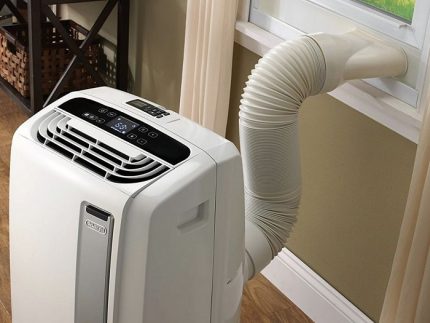
Another important point is an even and solid foundation. In old houses there is a sloping floor, it will have to level. To do this, it is not necessary to sort the boards or make cement pouring; you can put gypsum boards or thick plywood on top of the existing flooring.
Stage # 2 - conclusion of the duct to the street
One of the drawbacks of floor-mounted air conditioners with an air duct is precisely this same air duct - a thick corrugated pipe, one end of which is integrated into the unit body, and the other must be brought out onto the street.
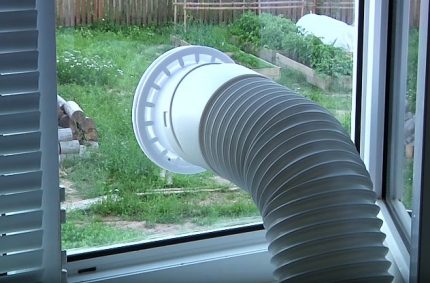
We offer the most successful, in our opinion, option, thanks to which two main goals can be achieved:
- ensure the output of heated air to the outside;
- keep attractive window design.
As a result of the work done, you can open the window sash for the duration of the air conditioner’s operation and connect the duct to the frame with plexiglass inserted according to the mosquito net principle. Plexiglass transmits light well and has the strength necessary for strong fixation of the pipe.

All work can be done independently. If you don’t find a tool, you can buy it, ask your friends, or rent it.
You will need:
The elements for fixing the air duct - a strap, a diffuser or an adapter - should be made of more flexible and lightweight plastic, metal fittings are not suitable.
Also required:
- building tape;
- long metal ruler;
- pencil or marker;
- construction knife;
- sealant;
- a cleaner;
- sandpaper.
Prepare sponges, rags, containers with water - all that is necessary for cleaning and degreasing materials.
Sequencing:
Step # 1 - cut a piece of plexiglass to fit the frame.
First, measure the length and width of the frame with a mosquito net, then transfer the dimensions to plexiglass and cut a piece.
The corners will be fixed on the edges of the frame in order to fix it on the window, so the glass should be slightly smaller than the frame. To find out how much, we apply corners to the edges of the frame and make the same indentation on the glass.
To cut a piece of plexiglass, you can use an aluminum profile: apply it to the drawn line and draw it several times with a construction knife. Then just bend along the cut line.
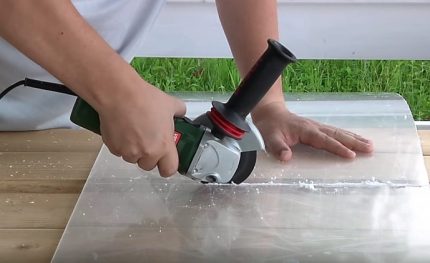
The uneven or fused edges of the finished rectangle need to be chipped with a knife or sanded with a fine “skin”.
Step # 2 - cut a round hole under the duct.
We determine the place where the hole will be located - this is the lower part of the frame, that is, about 15 cm from the bottom edge of the Plexiglas sheet. We apply the narrow part of the diffuser, circle it with a marker or a knife. For cutting we use a jigsaw or a homemade soldering iron.
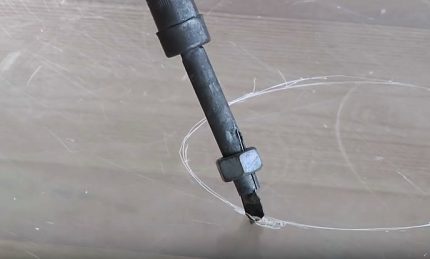
Having cut the circle to the end, squeeze out a circle and get a hole of the desired diameter. We clean the edges with a knife or sandpaper.
Step # 3 - we fix plexiglass on the frame from the mosquito net.
It is important to maintain consistency here: first fix the glass, and then remove the mesh and the fixing rubber cord, otherwise the frame will lose stability or simply fall apart into separate elements.
For gluing, it is best to use a sealant, but first you need to degrease the frame.

Put alcohol on a cloth and wipe the frame around the perimeter. Glass at the edges can be treated with sandpaper to increase adhesion.
Then we squeeze out a transparent universal sealant using a “gun” and apply plexiglass. First remove the protective film from the glass - until this point it is better not to touch it.
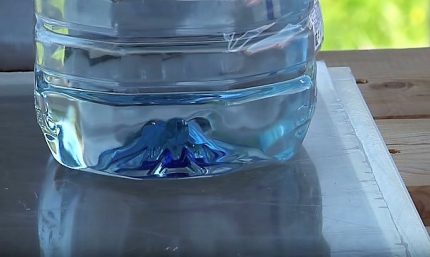
After the sealant has dried, the mosquito net can be removed. First, gently pull out the rubber cord, then pull the net, and insert the cord back. This is necessary to fix the plastic holders, “ears”, located at the edges of the frame.
If you think that the cord is not needed, remove it with the net, and glue the “ears” on the sealant.
Step # 4 - insert the diffuser into the hole and fix it.
We first disassemble the diffuser into several parts, we obtain a pipe segment, a grill, a grid and a locking element in the form of a circle with “reeds”. First we insert a plastic tube, then we apply a small mosquito net to the wider end, twist the grate, and on the other hand we put in a lock circle.
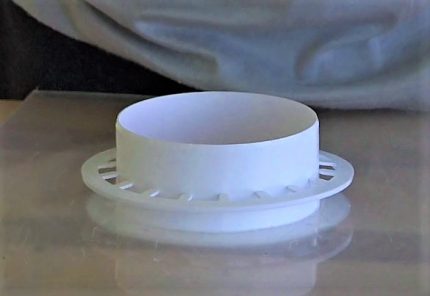
Everything, the frame with the designed hole for attaching the duct is ready. It remains to open the sash and insert it into the window to check operation. If you coped with the conclusion of the corrugation of the mobile air conditioner, consider that the installation was a success.
Stage # 3 - Power Connection
A power outlet is required for the air conditioner to work. The main thing is not to overload the wiring if it is not provided for the installation of powerful equipment. Manufacturers do not insist on providing grounding or installing a separate machine, but the presence of RCDs is usually specified in the instructions.
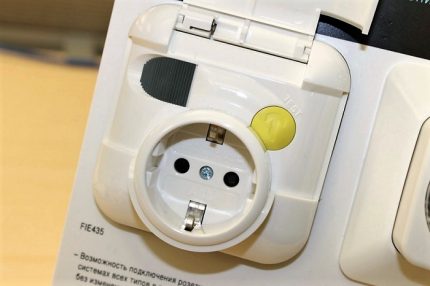
The socket must be near the unit, and therefore, from the window. The use of extension cords, filters, and other similar electrical equipment is not recommended.
General requirements for electrical installation:
- Use only certified equipment and wires.
- Do not use the air conditioner if the power cable is broken.
- Disconnect the unit from the power supply before any repair or maintenance work.
- Do not allow water to enter the chassis, such as raindrops from a window.
Some air conditioners heat up when operating at full power, so make sure that children and animals do not come up with the devices turned on. In any emergency situations - smoke from the unit, burning odor, leakage - immediately unplug it.
Stage # 4 - testing and operating rules
The first start-up should only be carried out after the duct is brought out.You also need to make sure that the power supply is working.
Procedure:
- We check the tightness of the corrugated pipe connection.
- Insert the plug into the outlet.
- Press the key or the "On" button.
- We select the operating mode, temperature, fan speed.
- Click the "Start" button.
Make sure doors and windows are closed. After a while, you should feel the change in air temperature in the room. If this does not happen, check if you have chosen the correct operating mode. In case of difficulty, call the service center.

To clean the case, use soft rags and sponges, only neutral detergents that cannot scratch the plastic or wipe off the gloss. Clean the grate with a soft brush.
Remove and rinse the filter from time to time. The recommended interval is after 3 months. Use only clean water and mild detergents free of alcohol and acids.
As the sump is filled, drain the condensate. To do this, remove the plug from the hose and lower its end into the container. Usually a little condensate accumulates, since for the most part it evaporates naturally.
Other options for connecting corrugations
We examined in detail the best option for the outlet of the duct - into the hole in the window.
But there are other solutions. All of them are less successful, and now we will explain why:
- The output of the corrugation into the window, transom or ajar window. This is often done by everyone who does not get their hands on equipping a more acceptable unit. Cons - heated air immediately returns back to the room, the efficiency of the unit decreases.
- Air outlet through the balcony door. A bad option if the balcony is glazed, if not - the minuses are the same as in the solution with a window leaf.
- Connect the pipe to the hole knocked out in the wall. An acceptable option, if you provide maximum thermal insulation.
The latter solution is suitable if you use a mobile air conditioner constantly.
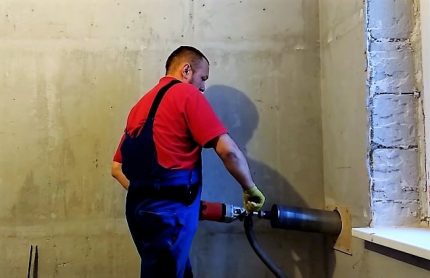
When the air conditioner is turned off, the hole is closed. You can use the “plug” from the insulation, or you can put a replacement - the ventilation valve.
In private homes, there are sometimes windows with lifting or sliding sashes. They are convenient for the outlet of the duct - the sash is pushed back, and a plastic or plexiglass panel is inserted in its place.
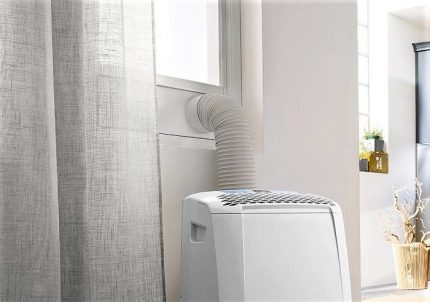
Any option is suitable if the heated air remains on the street and does not return to the room through open windows or doors.
Before you choose and install a mobile air conditioner at home, be sure to consider the nuances of installation.
Conclusions and useful video on the topic
A simple and inexpensive solution for a rented apartment:
Analysis of the installation error - what happens if the duct is lengthened:
Professional installation tips:
According to user reviews and experts, floor mobile air conditioning is efficient, useful and especially convenient for owners of seasonal housing. It is easy to install and maintain. The only difficulty is in the outlet of the duct, but thanks to our article you already know how to deal with it.
Tell us about how to install a portable air conditioner in your home or office. Share the technology details you know. Please leave comments in the block below, post a photo and ask questions about the topic of the article.

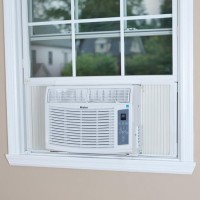 How to install air conditioning in a plastic window: technology secrets and installation instructions
How to install air conditioning in a plastic window: technology secrets and installation instructions 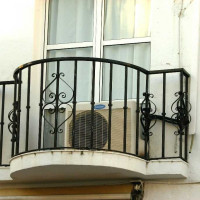 How to install air conditioning on the loggia and glazed balcony: instructions and valuable recommendations
How to install air conditioning on the loggia and glazed balcony: instructions and valuable recommendations  How to choose a floor air conditioner: selection tips + an overview of the best models
How to choose a floor air conditioner: selection tips + an overview of the best models 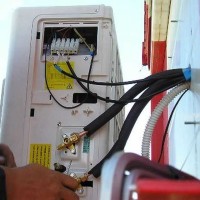 How to install the air conditioner on the load-bearing wall: rules + technological sequence
How to install the air conditioner on the load-bearing wall: rules + technological sequence 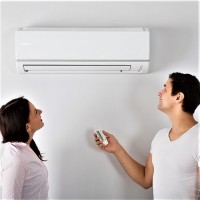 How to choose an air conditioner: recommendations for choosing + TOP-5 of the best brands
How to choose an air conditioner: recommendations for choosing + TOP-5 of the best brands 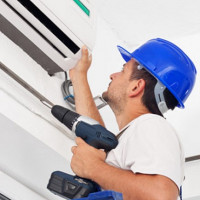 How to install and connect an air conditioner: detailed instruction + analysis of errors
How to install and connect an air conditioner: detailed instruction + analysis of errors  How much does it cost to connect gas to a private house: the price of organizing gas supply
How much does it cost to connect gas to a private house: the price of organizing gas supply  The best washing machines with dryer: model rating and customer tips
The best washing machines with dryer: model rating and customer tips  What is the color temperature of light and the nuances of choosing the temperature of the lamps to suit your needs
What is the color temperature of light and the nuances of choosing the temperature of the lamps to suit your needs  Replacement of a geyser in an apartment: replacement paperwork + basic norms and requirements
Replacement of a geyser in an apartment: replacement paperwork + basic norms and requirements